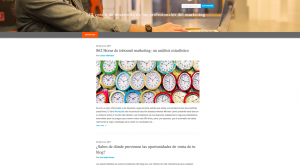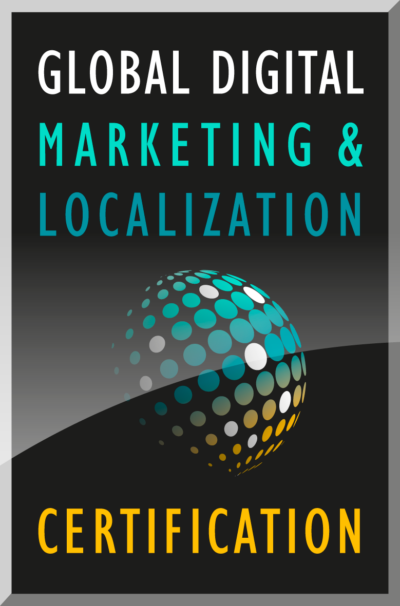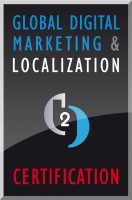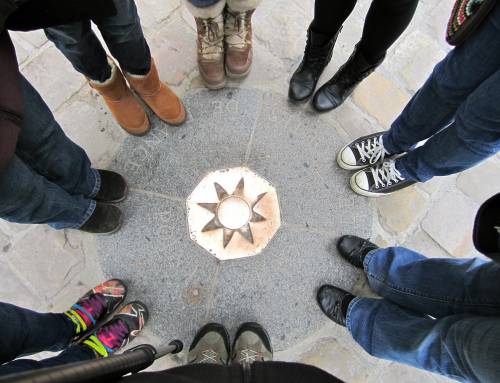This is the final paper presented by David Chaves, a recent graduate of the Global Digital Marketing and Localization Certification (GDMLC) program. This paper presents the work being produced by students of The Localization Institute’s Global Digital Marketing and Localization Certificate program. The contents of this Paper are presented to create discussion in the global marketing industry on this topic; the contents of this paper are not to be considered an adopted standard of any kind. This does not represent the official position of Brand2Global Conference, The Localization Institute, or the author’s organization.
HubSpot is a multinational digital marketing company based in Cambridge (EEUU) that has expanded globally over the last decade. As part of this expansion process, the company localizes its product and content, which are natively written in English, into five different languages to address the top markets where they operate.
When the company started to have its content localized into Spanish back in 2014 – at which point it still did not have a dedicated internal localization team – there was not a clearly defined strategy in place so as to optimize and maximize the impact of localized assets across the Latin American and Iberian markets. Because of this lack of strategic localization efforts, the performance of the company’s marketing blog in Spanish varied notably across regional locales – while, for instance, the performance of blog posts was usually very good in Mexico and Colombia, this was not the case in other top markets for the company such as Chile or Spain. This cross-national differences were also noticeable for other important metrics, such as the number of organic searches for the company’s site, the number of in-language app users or the number of leads generated per country.
When the localization team was officially established in 2016, the dedicated team for Spanish Localization faced the challenge of creating localized content which would yield a consistent performance across regional locales in the main Spanish-speaking markets.

Image. Homepage of the HubSpot’s Spanish marketing blog.
A gradual and successful standardization process
After thoroughly analyzing the purpose of the company’s localized content, as well as the top markets where it would be deployed, it was clear for HubSpot’s Localization team that they needed to standardize their strategy for the Spanish language.
It was at this point when they decided that the best strategy to achieve such standardization was to aim for a neutral or international version of Spanish. This strategy would not only allow them to target multiple Spanish-speaking markets at once, but it would also represent a very time and resource-effective plan for the company. Since the concept of international Spanish had been successfully adopted by other companies in the past, like Microsoft, who localize their content into a single, unified variant of Spanish as they clearly state in the style guide, HubSpot decided to embark on the same adventure.
The first step to changing the localization mindset and channeling the efforts toward localizing content into international Spanish was to perform an assessment of the overall tone and voice of the existing localized content. This was a critical step to defining the scope of this challenging task – prior to this decision, the content was localized into Spanish, but there was no particular tone and voice defined for this language. This meant that each translator would use their own voice, tone, and style, which understandably resulted in an inconsistent blend of content.
Once the team had identified the main linguistic areas where changes and improvements were needed, they started to document the relevant linguistic guidelines in a style guide. The style guide started as a draft to guide the team through the process, but it soon became a comprehensive and useful resource for many internal and external stakeholders. Alongside the style guide, the team started to compile a list of regular terms and included them into a bilingual glossary (English-Spanish) in order to standardize the company’s most commonly-used terminology. Both linguistic resources were developed internally, but HubSpot’s localization team received continuous and valuable input not only from internal teams not related to localization, but also from external parties (such as linguists) that would be very familiar with the company’s content.
In parallel to this effort, the localization team started to develop a close relationship with one language service provider (LSP) to cover all languages. In this regard, one aspect that was very important for HubSpot was to have a pool of translators trained up by their internal localization specialists to make sure they would follow their guidelines to ultimately meet their high quality standards. The team then started to have weekly meetings with the LSP’s quality manager and the key linguist for Spanish, who would act as a liaison point between the freelance translators and HubSpot’s internal localization specialists. This relationship got deeper and more mature over time, thus establishing an effective feedback and query management system whereby the translators could raise queries as well as give and receive feedback directly from HubSpot, and vice versa.
Once the basis for this strategy was set – namely the development of a style guide and a glossary, and the establishment of a trained and approved translation team –, it was time to track quality improvements over time to assess the effectiveness of the resources developed and deployed. The team then came up with an LQA system (linguistic quality assurance) where they would score each localized project based on a series of criteria, such as completeness, adherence to style guide and glossary, compliance with the company’s newly redefined tone and voice, among others. These scores were averaged and shared with the LSP on a monthly basis to help them understand what points still need to be improved, and what techniques were proving to be effective.
First positive results and future initiatives
Just a few months had to elapse before the company started to see the positive results of their standardization efforts for deploying content in Spanish-speaking markets. The metrics that were being monitored were living proof for the effectiveness of such strategy – the number of in-language app users increased notably over one single quarter, the number of organic searches received to the Spanish blog had more than doubled the previous year’s figures, and the number of downloads for each content offer continued to increase over time. And more importantly, the company started to see a rapid growth across multiple Spanish-speaking markets as a result of the use of an international version of the language.
These positive measures were also tied to an increase in the average quality of the deliverables the team received from the LSP – while the LQA results ranged dramatically between low and high values at first, they reached a consistent good level after approximately six months.
After such fruitful period, the team is now openly collaborating with several internal and external stakeholders to take Spanish localization efforts to the next level. They are, for instance, working together with the Spanish Marketing Team in order to develop specific target personas for the Spanish markets and how the content will be adapted to them without detriment to the international tone and voice achieved. In addition to that, the localization team is currently undertaking a revamp of the top posts of the company’s Spanish blog to make sure they are in line with the guidelines established.
Author Bio:

David Chaves works as a Spanish Localization Specialist at HubSpot. He is directly responsible for overseeing Spanish localization projects, as well as defining the company’s tone and voice in Spanish. His role also entails helping SLPs train translators up to HubSpot’s quality standards and style guidelines.
David graduated in Translation and Interpreting from the University of Granada (Spain) and has a MA in Translation and Cultural Mediation from the University of Córdoba (Spain). He has several years of work experience in the translation industry, working both as a freelance translator and in-house linguist, and his expertise involves several fields, such as market research, healthcare, and marketing.
After joining HubSpot, he developed a keen interest in digital marketing, which motivated him to take the Global Digital Marketing and Localization Certification to get deeper insights and leverage them for his current role.
Connect with David
On LinkedIn
Email David
please click here. The program offers dual credentials, with a Certificate from the University of North Carolina Wilmington and a Certification from The Localization Institute.










